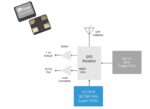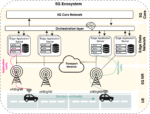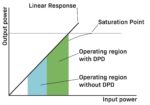5G brought architecture changes that require synchronization. Depending on the location and network site, those timing requirements require different PTP profiles and PTP capacity.
Clock oscillator achieves 0.2 ppm frequency tolerance
Depending on temperature range, the SiT7910 Super TCXO from SiTime can attain frequency stability of less than 0.1 ppm. Clock oscillator circuits serve two functions. They provide a clock timing signal for digital circuits such as microprocessors and they keep track of time, often for time-stamping of events. While oscillators for digital circuits typically produce […]
Mitigate mmWave test costs in 5G smartphones
The economics of manufacturing test directly affect how you plan for the right number of test stations and test sites. Adding mmWave testing makes the difference.
Orchestration at the edge reduces network latency
Edge computing brings benefits to users by reducing network latency, thus improving services, but needs management orchestration. Here, we demonstrate how orchestration improves latency in an automotive edge-computing use case by reallocating network resources. Multi-access edge computing (MEC), commonly called “edge computing,” moves data processing to the edge of communication networks. Bringing computing close to…
Measurements show 5G improves latency in public networks
Measurements on public networks at our facilities demonstrate how 5G’s lower latency compared to LTE can improve industrial applications.
5G Reshapes mobile RF design strategies
Steep learning curves in RF mmWave antenna design demand collaboration and technology understanding beyond sub-6 GHz strategies.
How DPD improves power amplifier efficiency
Digital predistortion compensates for an amplifier’s nonlinearities, letting it operate in its nonlinear region for maximum power efficiency.
Deploy and maintain an Open RAN network
Open radio access networks offer advantages in locating network functions of proprietary RANs. Automation and orchestration let telecom networks do what computing networks have done for years.
Our first 5G handbook awaits you
5G Technology World and EE World present our first 5G handbook, digital edition.
DSS lets 5G and LTE share spectrum
Dynamic spectrum sharing of 5G and LTE networks addresses the need for spectrum, particularly at mid-band frequencies. Here’s how it works.








